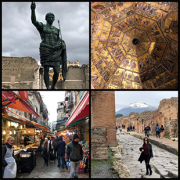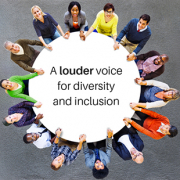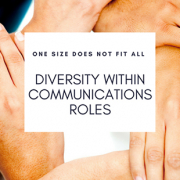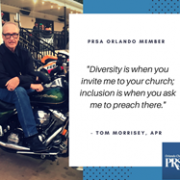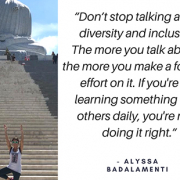7 Places To Learn About Native American History in Florida
By: Veronica Figueroa Fernandez, PRSA Orlando Diversity & Inclusion Chair
November is Native American Heritage Month, a time to recognize Native Americans and to celebrate the rich culture, art, accomplishments and contributions of the first inhabitants of the United States.
Thirty-one years ago, President of the United States George H.W. Bush declared the month of November as Native American Heritage Month. Prior to that, the establishment of the cultural celebration began in 1976 when an Osage-Cherokee Indian named Jerry C. Elliot-High Eagle authored Native American Awareness Week legislation in 1976, leading then President Reagan to proclaim November 23-30, 1986 as “American Indian Week.”
Now, the irony doesn’t escape me that the cultural celebration takes place during Thanksgiving, a celebration dating back to the complicated history between Native Americans and the early settlers who wiped them out through war and disease. Unfortunately, many don’t take the opportunity during cultural celebrations to dig deeper into the full meaning of the culture and its impact on our lives.
Think back to your days in school. Do you remember learning about the 90 Wampanoag tribesmen who attended the first Thanksgiving? Or did your curriculum gloss over that and you only remember working on a paper headdress (an inaccurate one) during arts and crafts? Things have certainly come a long way, but we still have far to go.
Throughout our history, Native American culture has been reduced to simple or negative stereotypes, especially in the media, which has shaped how we view the world today. We’ve reduced the individual culture of more than 500 Native American tribes into one stereotypical “war cry.”
This Native American Heritage Month, I invite you to do a little digging into our nation’s history and learn about the tribes that were here before the settlers. From reading a book to watching a documentary to stumbling across a TikTok influencer who shares videos about her culture, there have never been more educational tools at our disposal.
And if you’re looking to experience Native American history in Florida, take a gander at this round-up of historic sites and state parks scattered across the state:
- Ah-Tah-Thi-Ki Museum in Clewinston, Florida: The Ah-Tah-Thi-Ki Museum is owned and operated by the Seminole Tribe of Florida. It is located on the Big Cypress Indian Reservation in Hendry County, Florida and it is home to more than 180,000 unique artifacts and archival items.
- Dade Battlefield Historic State Park in Bushnell, Florida: Dade Battlefield Historic State Park was the site of a desperate clash between Seminole warriors fighting for their land and U.S. soldiers. It preserves the Second Seminole War battlefield, where the longest and costliest American Indian war in U.S. history took place. The Visitor Center features a small museum with artifacts and exhibits related to the Florida Seminole wars.
- Paynes Creek Historic State Park in Bowling Green, Florida: Built in early 1849, this Florida State Park located near Bowling Green, Florida is recognized as a U.S. National Register of Historic Places, under the title of Payne’s Creek Massacre-Fort Chokonikla Site. A museum at the visitor center depicts the lives of Florida’s Seminole Indians and pioneers during the 19th century.
- Mound Key State Archaeological Park in Estero, Florida: Mound Key was an important site for the Calusa Native Americans. Located in Fort Myers, Mound Key is estimated to have been inhabited 2,000 years ago by the Calusa and is thought to be the capital town of the tribe. Mound House, a museum and property of the Town of Fort Myers Beach, invites visitors to take guided kayak tours, experience interactive educational programs, participate in Calusa Indian tools and weapons demonstrations, and more.
- Florida Museum of Natural History’s South Florida People & Environments Exhibit in Gainesville, Florida: A permanent experience at the Florida Museum of Natural History, this exhibit allows visitors the opportunity to stroll through a full-scale mangrove forest and mudflat, enter the house of a Calusa leader during a political ceremony in 1564, get a close-up view of thousand-year-old Calusa art, and more.
- Miccosukee Village in Miami, Florida: The Miccosukee Indians were originally part of the Creek Nation, but a small group migrated to Florida before it became part of the United States. The tribe adapted to living in small groups spread throughout the Everglades and resisted efforts to become assimilated. The Miccosukee Village features a museum of Miccosukee history preserved through historical documents, archival photos, original artifacts and alligator demonstrations, among other experiences. The Miccosukee Village is temporarily closed.
- Crystal River Archeological State Park in Crystal River, Florida: This 61-acre Florida State Park is one of the longest continuously occupied sites in Florida. For 1,600 years, the area served as a ceremonial center for Native Americans and it is estimated that as many as 7,500 Native Americans visited the complex from great distances each year to conduct trade and bury their dead. While the park is primarily an archaeological site, the park is a popular fishing and birding destination.
Additional Resources:
- Orange County Regional History Center’s First People Exhibit
- Orlando Museum of Art’s Art of the Ancient Americans Collection
- The City of Safety Harbor’s Tocobaga Indians Exhibit
- Weedon Island Preserve Cultural & Natural History Center, St. Petersburg
- The Seminole Tribe of Florida
- National Congress of American Indians
- First Nations Development Institute
Header image credit: Oseola (As-se-he-ho-lor, Black Drink), a Seminole; bust-length. Artwork by George Catlin, ca. 1837. National Archives Identifier: 530983, Local Identifier: 111-SC-93123



